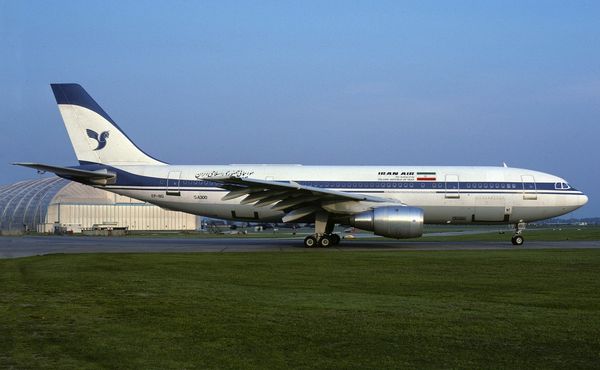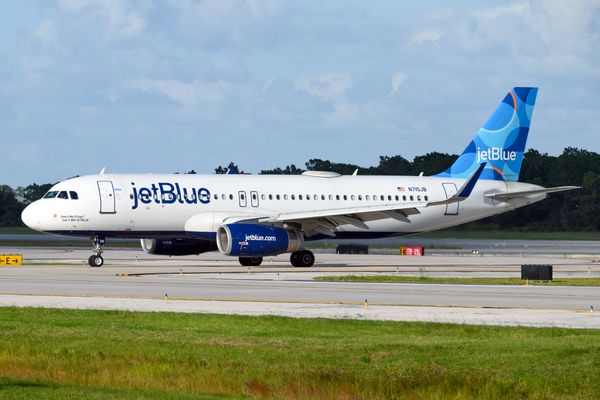The new Boeing aircraft could be argued to be one of the safest in the skies today.
Background
The Boeing 737 MAX program debuted in August 2011. It was designed as a more modern successor to the 737NG, the previous generation of 737 aircraft which has been around since the late 1960s. The MAX was designed with fuel efficiency, comfort, and renewed technology in mind.

The first airframes were tested in the mid-2010s and took to the skies at the beginning of 2016. Since the start of the program, Boeing has amassed thousands of orders from airlines all over the world.
In 2017, the first airframe was delivered to Malindo Air in Indonesia, with its first revenue service taking place on May 22, 2017. In the beginning, there were very few issues with the new MAX aircraft. Passengers praised the quieter engines and airlines were very pleased with the jet's fuel economy, capacity, and overall performance.

Safety Concerns
However, on October 29, 2018, a Lion Air 737 MAX 8 crashed in Indonesia, killing all 189 passengers onboard. The deadly crash led to some very serious investigations by authorities but the findings were unclear. It was known that there were issues with the flight crew's knowledge of the anti-stall system in the aircraft, but the 737 MAX continued to operate until early March 2019, when a second deadly crash occurred in Ethiopia. All 154 passengers were killed in the deadly incident.

Almost immediately, many aviation regulators began to ground the aircraft. By mid-march, no 737 MAX passenger flights were being operated.
Subsequently, the 737 MAX underwent extensive testing to determine the cause of the two crashes. It was later found that the MCAS system — an anti-stall system found only on the MAX — was at fault. Sensors would improperly send data to the aircraft, suggesting an orientation that the aircraft was not in. The aircraft would then attempt to correct the pitch of the nose given the incorrect data, causing the aircraft's nose to pitch down considerably. When coupled with improper training of flight crews on how to use the system, the cause of the crashes became clear.

Soon after, Boeing implemented a second sensor and introduced new software to determine the pitch angle of the aircraft and reduce the likelihood of faulty information. New training was also recommended for flight crews to ensure familiarity with the system.
Due to the intense scrutiny and requirements for the MAX to be recertified by the authorities in many countries, the aircraft did not carry passengers again until the very end of 2020, with most airlines operating scheduled MAX flights by mid-2021 on regular basis. Still, as of April 2023, airlines in China were only recently given the green light to begin MAX operations once again.
Why is it Safe?

Because of the sheer intensity of the scrutiny the aircraft faced, the Boeing 737 MAX could be considered one of the safest in the world. In fact, among the dozens of models of commercial airliners around the world, it is likely the safest due to the amount of regulation testing that took place. The aircraft was in Boeing's view to make the necessary changes, and the company was pressured into prioritizing its safety following the accidents that took place.
Comments (6)
 Mik
What a BS of an article.
The 737, any 737 (MAX included) is one of the oldest aircraft still flying today. Many manual stuff, full of cables with pulleys running along the frame, lack many safeties modern aircraft have , lack of redundancy, lack of computer diagnosis help, you name it!
One of the safest? That's a complete joke!
737 popularity is due to two things: It's from mighty Boeing that unfortunately is a just a shade of the big reference company once was and two, because of legacy reasons. Many companies had 737s flying and it was easier to keep getting newer models without pilots new certification needed.
Mik
What a BS of an article.
The 737, any 737 (MAX included) is one of the oldest aircraft still flying today. Many manual stuff, full of cables with pulleys running along the frame, lack many safeties modern aircraft have , lack of redundancy, lack of computer diagnosis help, you name it!
One of the safest? That's a complete joke!
737 popularity is due to two things: It's from mighty Boeing that unfortunately is a just a shade of the big reference company once was and two, because of legacy reasons. Many companies had 737s flying and it was easier to keep getting newer models without pilots new certification needed.
 Justin
Marjorie Rivers - I'm really glad to see your comment offering counterpoints so I don't just assume all is rosy
Justin
Marjorie Rivers - I'm really glad to see your comment offering counterpoints so I don't just assume all is rosy
 Marjorie Rivers
My dear fucking Audrey,
Of course the fucking dude is gonna write that shit up top about this fucking article or whatever the fuck you wanna call it. This Kramp kiddo might be your friend; probably your boy friend, but he is so fucking deluded to write something so shitty as this. I work in the industry as a flight attendant and I think that this makes my fucking customers so fucking pissed. I don’t fucking care about feelings I’m not here to fuss around. Be real, whatever Anton write is so tucking correct. It ain’t shit. Grow up!
Marjorie Rivers
My dear fucking Audrey,
Of course the fucking dude is gonna write that shit up top about this fucking article or whatever the fuck you wanna call it. This Kramp kiddo might be your friend; probably your boy friend, but he is so fucking deluded to write something so shitty as this. I work in the industry as a flight attendant and I think that this makes my fucking customers so fucking pissed. I don’t fucking care about feelings I’m not here to fuss around. Be real, whatever Anton write is so tucking correct. It ain’t shit. Grow up!
 Anton
This article is highly problematic. Implying that “improper training” was the fault of the operating airlines, when in fact it was entirely Boeing, discouraging training and gaslighting airlines that asked and in some cases repeatedly asked for training by maintaining this was not required. Of course that’s because Boeing had made significant and sub optimal changes to the aircraft’s aerodynamics and conspired to hide the fact that MCAS even existed. A poorly written article. For balance, you could ask the families of those who were killed in either of the two crashes of they think the 737 Max Is a safe airline, let alone the safest, or even one of.
Based on the two catastrophic hull loss incidents, statistically the 737 Max would nowhere near be one off the safest aircraft flying today,. Based on statistics, likely one of the most likely to crash.
Anton
This article is highly problematic. Implying that “improper training” was the fault of the operating airlines, when in fact it was entirely Boeing, discouraging training and gaslighting airlines that asked and in some cases repeatedly asked for training by maintaining this was not required. Of course that’s because Boeing had made significant and sub optimal changes to the aircraft’s aerodynamics and conspired to hide the fact that MCAS even existed. A poorly written article. For balance, you could ask the families of those who were killed in either of the two crashes of they think the 737 Max Is a safe airline, let alone the safest, or even one of.
Based on the two catastrophic hull loss incidents, statistically the 737 Max would nowhere near be one off the safest aircraft flying today,. Based on statistics, likely one of the most likely to crash.
 Gabriel Kramp
Offensive and brutal comment.
Gabriel Kramp
Offensive and brutal comment.
 Audrey Rielly
Very rude! The article is fantastic and written by my very good friend. :))))))
Audrey Rielly
Very rude! The article is fantastic and written by my very good friend. :))))))
Add Your Comment
SHARE
TAGS
INFORMATIONAL Boeing Boeing 737 Boeing 737 MAX 737 MAX IncidentRECENTLY PUBLISHED
 Essential Legal Tips for Tourists Chartering a Yacht in Dubai
Discover how yacht rentals in Dubai are regulated and learn what every tourist should know about contracts, insurance, and taxes before setting sail.
TRIP REPORTS
READ MORE »
Essential Legal Tips for Tourists Chartering a Yacht in Dubai
Discover how yacht rentals in Dubai are regulated and learn what every tourist should know about contracts, insurance, and taxes before setting sail.
TRIP REPORTS
READ MORE »
 Mixed Signals: The Tragic Story of Iran Air Flight 655
What would have otherwise been a routine passenger flight across the Strait of Hormuz culminated in a heartbreaking tragedy, all because of a costly system misunderstanding by an external party. This is the tragic story of Iran Air Flight 655.
STORIES
READ MORE »
Mixed Signals: The Tragic Story of Iran Air Flight 655
What would have otherwise been a routine passenger flight across the Strait of Hormuz culminated in a heartbreaking tragedy, all because of a costly system misunderstanding by an external party. This is the tragic story of Iran Air Flight 655.
STORIES
READ MORE »
 My Unexpectedly Cheap Last-Minute Getaway with JetBlue Airlines
My name is Daniel Moreno. I live in Tampa, Florida, and I work as a logistics coordinator at a small distribution company. I had to book a JetBlue Airlines flight at the last minute. I was sure the price would be high because that’s usually what happens with late bookings within the United States. But the final cost surprised me — the ticket was much cheaper than I expected.
TRIP REPORTS
READ MORE »
My Unexpectedly Cheap Last-Minute Getaway with JetBlue Airlines
My name is Daniel Moreno. I live in Tampa, Florida, and I work as a logistics coordinator at a small distribution company. I had to book a JetBlue Airlines flight at the last minute. I was sure the price would be high because that’s usually what happens with late bookings within the United States. But the final cost surprised me — the ticket was much cheaper than I expected.
TRIP REPORTS
READ MORE »



